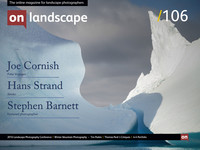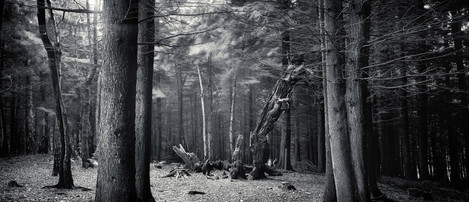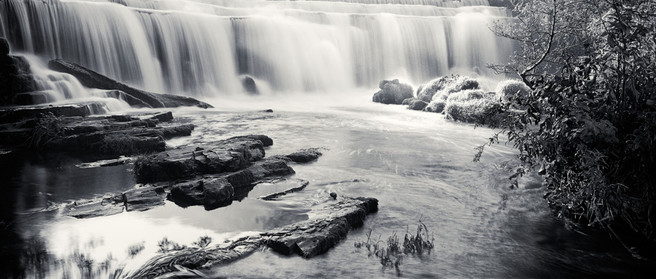Featured Photographer

Tim Parkin
Amateur Photographer who plays with big cameras and film when in between digital photographs.

Stephen Barnett
After studying art at the Sheffield School of Art and Design, Stephen originally worked as a freelance photographer and art administrator but now manufacturers highly detailed model cars in his home in the Peak District.
Stephen Barnett came to my attention when I was sent a link to a guy who had created a Holgagon, essentially a Holgapan 120 which had had its lens replaced with a helical mounted Schneider 90mm Distagon, and was producing some sublime black and white images in old school black and white film (Adox CHS 50 for instance). I've been wanting to feature him in On Landscape for a while and I hope you enjoy his work as much as I do.
Can you tell me a little about your education, childhood passions, early exposure to photography and vocation?
I was first taught to process film in 1974 at my College of further education in Nottingham, but I wouldn’t at that stage call it ‘photography’ as I was on my way to Sheffield School of Art to study Sculpture. But there was something about the smell of the darkroom that lingered because I started to notice that the Photography Department at Sheffield was a very vibrant place to be. Headed by two brilliant lecturers Roger Taylor and Ken Phillip who always kept a steady stream of visiting lecturers on the go it was an inspiring place to be. So after a year of ‘Sculpture’ I transferred to Fine Art Photography for my two remaining Degree years.
What are you most proud of in your photography?
I don’t think it’s time to decide what I’m proud about in photography because I’m not satisfied, yet. In a short photographic career after leaving college I did theatre photography, Press photography, commercial photography, art’s administration, and a few more things, enough to know that mixing work and photography ultimately spoiled the photography.
So I’m happy I gave things a try, but I changed direction and now I make super-detailed model cars for collectors around the world(!), and enjoy photography without any pressure other than the type I impose on myself.
In most photographers lives there are 'epiphanic’ moments where things become clear, or new directions are formed. What were your two main moments and how did they change your photography?
Two moments come immediately to mind that changed my view of what photography could do. The first was being taught the Zone System at college, and while it’s not always something that can be used, the technique of making a photograph rather than taking a photograph has always been a guiding principle.
And the second defining moment in my life came with my first meeting with Thomas Joshua Cooper. As a sculptor there was always an ‘otherness’ about what you made, it could either be figurative or abstract, but it was never literal. So meeting TJC and being privileged to see how he worked was the revelation. I suppose it is summed up with a quote by Minor White “One should photograph things not only for what they are but also for what else they are.” And that is still the direction of my own work now, forty years later.



